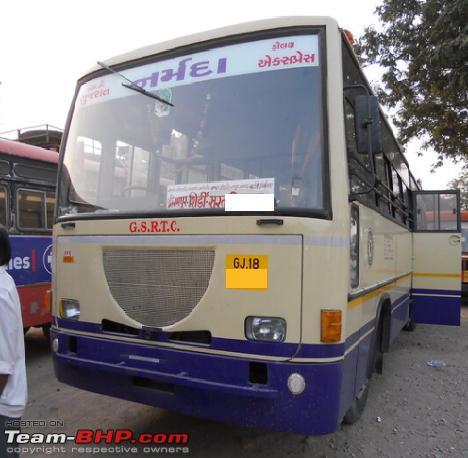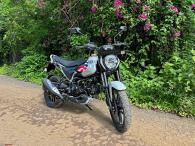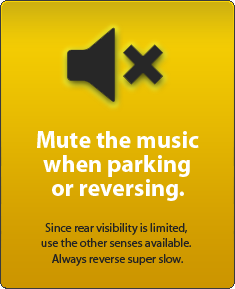News
1991 to 2022: Brilliant transformation of GSRTC bus services
Back in the day, Gujarat State Road Transport Corporation (GSRTC) had only one standard type of offering - the conventional 3+2 seater bus. It has really come a long way now.
BHPian vigsom recently shared this with other enthusiasts.
Introduction
Transport corporations are the no.1 people mover across the country after the railways, offering connectivity to small towns and villages that are, for the most part, not connected by rail. Despite their importance in helping people reach lesser-known destinations safely and with backup arrangements in the event of a breakdown, they are often looked down upon as featuring rickety buses, unclean interiors, taking longer than normal, stopping at below-average rest stops etc. As a result, such corporations do not get the due or the patronage that they deserve.
Here is my small way of:
- Acknowledging the efforts of those countless crew members, workshops, and support staff that keep the wheels of transport corporations moving.
- Showcasing how I have seen a transport corporation’s offerings transform over the years.
From this
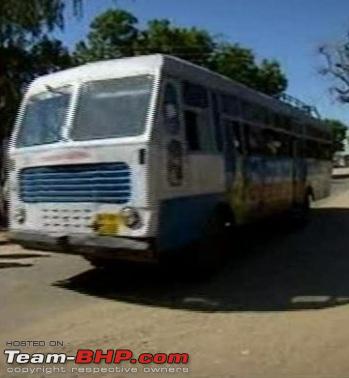
To this




How it all started
While I have resided in many cities and towns across states in India, the first time I stepped into a public transport bus was in the mid-70s in what used to be called the Pallavan Transport Corporation (PTC) in Chennai. This is now re-christened Metropolitan Transport Corporation (MTC). After moving up north, I don’t remember taking any public transport even in Delhi with the famed DTC. After moving back south in the 80s, I was amazed to see how well transport in TN was managed via the various zonal corporations named after kings, and the state express transport corporation named Thiruvalluvar Transport Corporation (TTC).
Enter GSRTC
Fast forward to 1991 – I moved to Gujarat for work and was appalled to see the condition of most buses plying here; in stark contrast to what I had experienced in TN. Private players in Gujarat would offer sleeper coaches way back then, but the state corporation buses were just one type and generally in below-average shape. My first ride in a transport corporation bus was in a local bus in Surat in 1991 – the local buses were surprisingly quite new and featured the Leyland Hino engines that had their characteristic silent note. The outstation buses were, by and large, poorly kept barring some outstanding ones bound for far off places like Amreli. Good or bad, GSRTC had only one standard type of offering – the conventional 3+2 seater bus, with a lot of metal, but not-so-much mettle. Given the state of highways then, journeys were a nightmare.
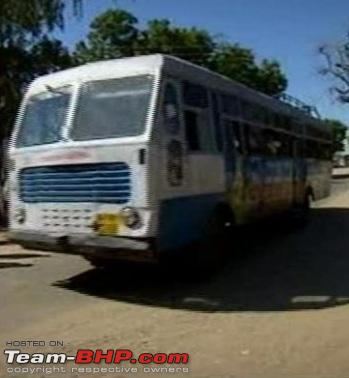
My first rides in an outstation GSRTC bus
This happened sometime in 2002 when I needed to travel to Vadodara at short notice. I had to choose between standing in the general coach of a train, with people already packed like sardines, or taking a bus. The bus would take approx. an hour and 45 minutes more than a superfast train for a 150km distance, but at least I could get to sit. This was a Surat-Dahod bus and very early into the journey, I realized that the bus wouldn’t cross 65 kmph. Having decided to travel, I just took the ride. The ride wasn’t anything great, with seats that had less foam and more fiber, a constantly rattling overhead metal luggage bin, a below-average rest stop, and the bus huffed and puffed, reaching Vadodara in 4 hours 15 mins; this, despite any traffic hold-ups.
My next outstation ride, again unplanned, was from Nasik to Surat, again in a standard bus sometime in 2006-07. This bus, was, however, in a much better state with a wall clock, better interiors, but then, would go through the various bus stations en route to eventually reach Surat in 7 hours.
One standard bus, average seats, lower frequency - all this was going to change, and change in style. This corporation, the GSRTC can now boast of the widest offering of buses to cater to various segments of travelers.
Fast forward to 2012
I did Surat-Ankleshwar a couple of times, and Surat – Bharuch once, and started seeing a huge change in offerings and quality of GSRTC. For the first time, I saw a GSRTC bus that was painted light red, and for the first time, I saw the bus sporting an entry door right in the front, unlike the hitherto center. The 3+2 seating remained, but the seats were a pleasant light brown. I was at Zadeshwar crossing Bharuch in approx. 1.5 hours, which was a cool 30 minutes shorter than my ride in 2002. I later discovered that these light red buses were called Gurjarnagari. My return ride was by a GSRTC AC seater bus that took about the same time but was super comfortable – 2+2 recliner seats with the ticket priced a mere 18 rupees more than the Gurjarnagari. By then longer routes had happened, and I remember seeing Ahmedabad – Pune AC seater buses too.
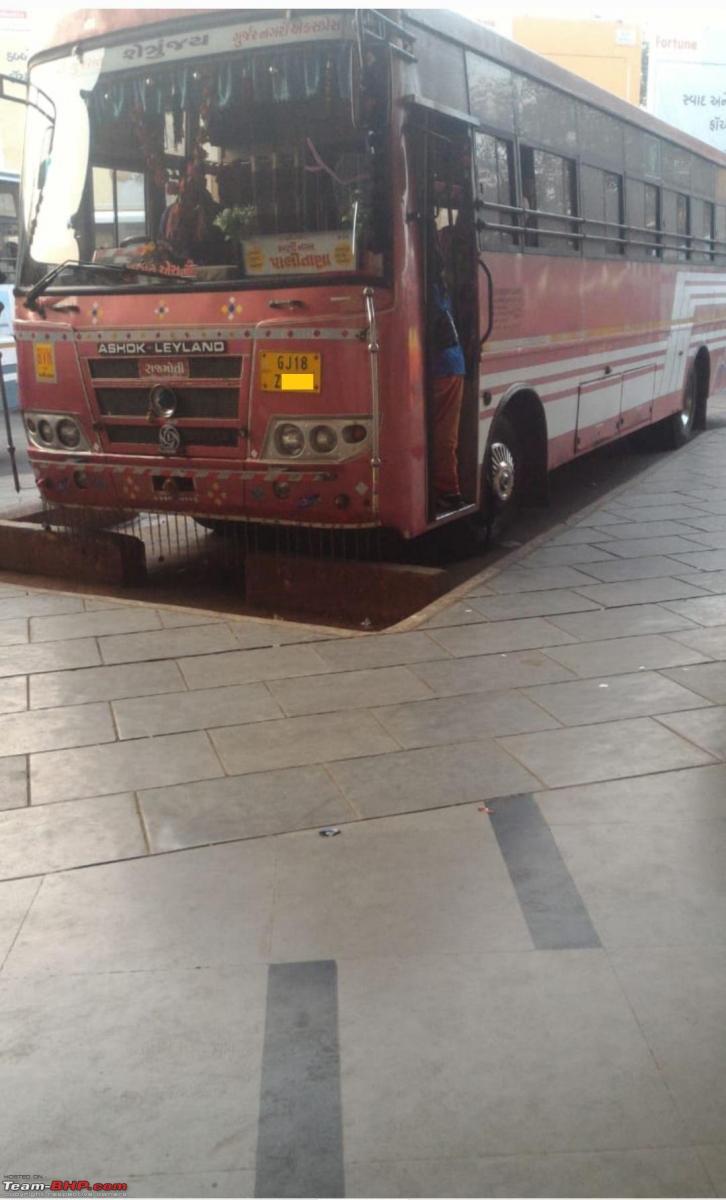
Fast forward to 2018
I was out of Gujarat for a few years, and when fate brought me back, I was amazed to see this huge transformation in GSRTC buses and was actually amazed at the variety – Ordinary, Express, Gurjarnagari, Sleeper seater, AC Sleeper, AC Seater, Volvo seater, Volvo Celeste Sleeper. From shying away from these buses some years ago to actually seeing the change, I decided to try them out for my intercity journeys.
My first ride in a renewed GSRTC was by a Volvo seater from Surat to Vadodara sometime in Sep-2018, and what an amazing experience it was. ₹286 for a 150km ride that took just 3 hours 10 mins, with one scheduled rest stop. I found the Volvo much better maintained than even private operators.
The ball was thus set rolling and I then almost forgot train rides for short distances, using GSRTC. In fact, in 2018-19, I lay claim to being one of the few who has ridden in ALL types of GSRTC buses except the AC seater. Sharing my experiences here:
Between Surat and Ankleshwar - one needs to keep switching lanes because both the right lanes are used up by truckers.
On the Narmada bridge
Inside the Volvo
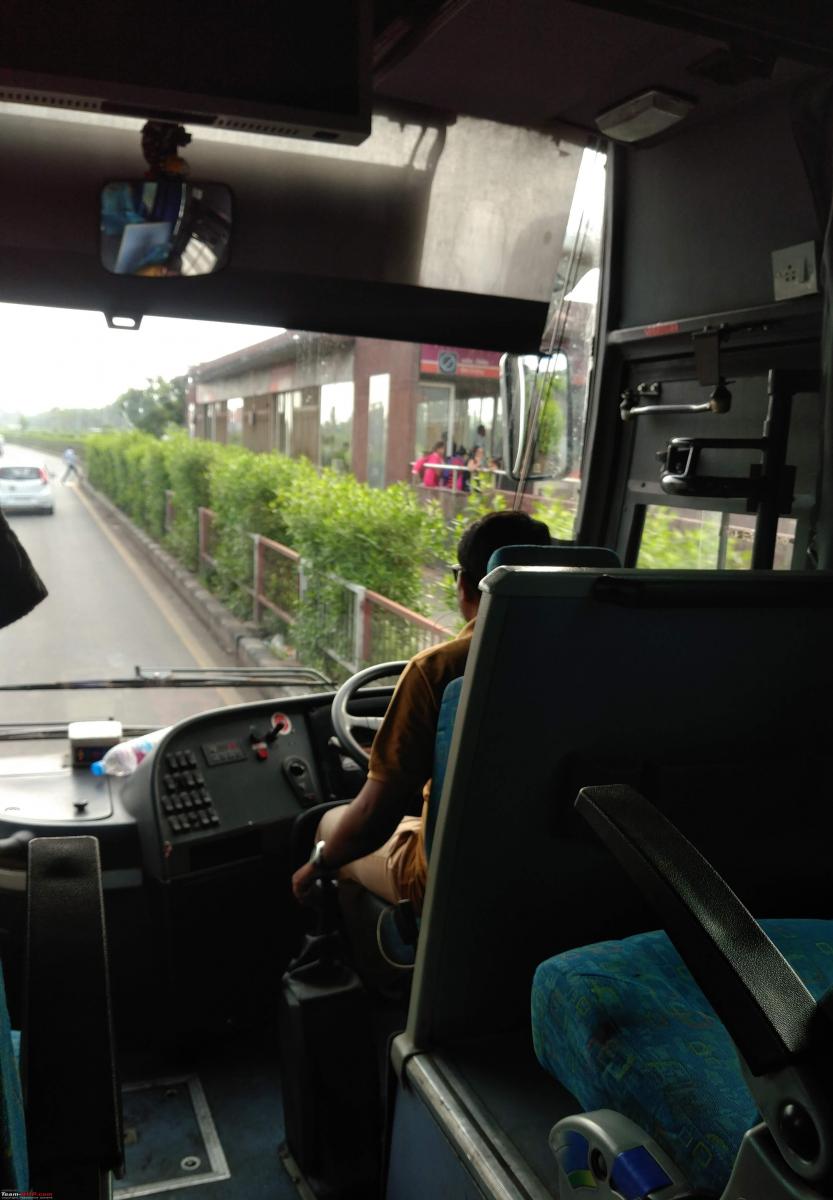

Our bus resting alongside a Surat-Bhuj Volvo
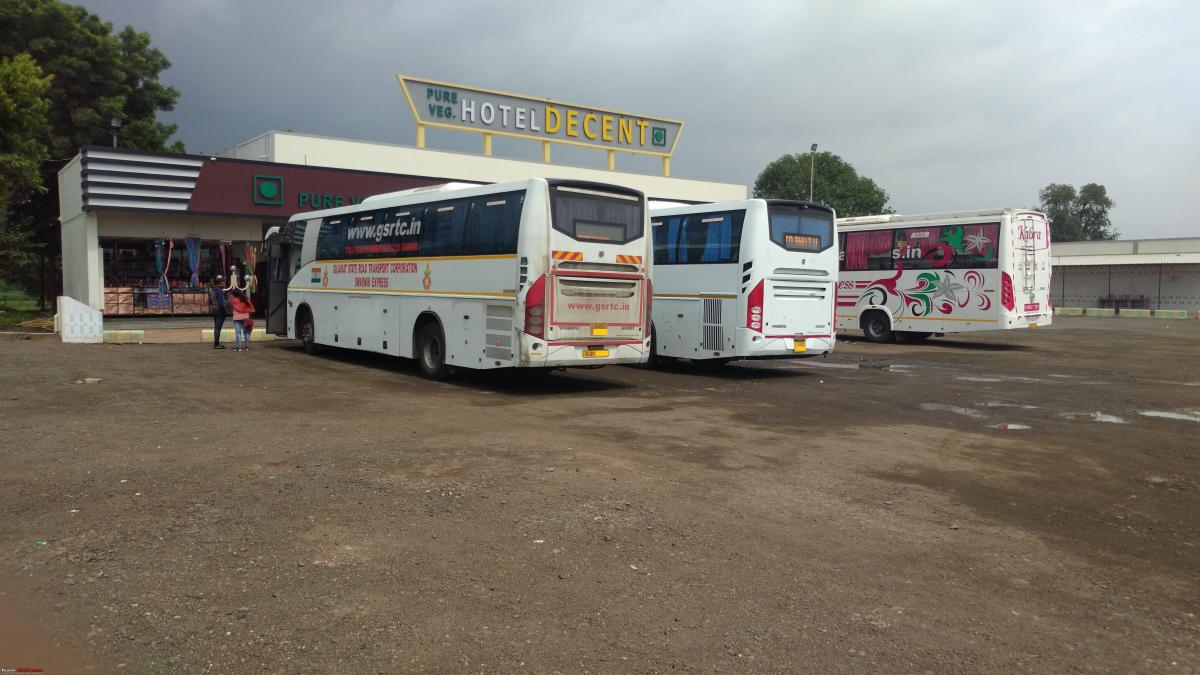

Common impressions across all categories of GSRTC buses
Likes
- Well maintained, with no awkward transmission noise (especially differential noise).
- eatly kept, save for some groundnut kernels and the odd chips packs thrown by irresponsible passengers in the non-AC buses.
- First Aid kit, Emergency exits in all buses.
- Comfortable seats – I’ve done four-hour journeys without having to move my bum around in discomfort.
- Overall exterior in good shape minus side-sweep marks. I have seen many buses with damaged and repaired fronts, though.
- Both brake lights and the parking lights work on all buses even after several years.
- On-time departures at the point of origin, and buses keep time unless there are traffic snarls on NH48.
- All buses’ drivers conditioned to cap their speed at 80-85kmph. Unlike TNSTC buses where the fuel pumps would be “locked” to prevent buses from going beyond a stipulated speed, here the potential was there but drivers would keep a check on their adrenalin.
- No breakdowns on the several trips that I undertook.
What could be better
- Rest stops mostly below average.
Category-wise experience
Express
- White and grey shade.
- 52 seater, 3+2 seating.
- Entry/exit door in the center.
- Driver cabin separated from the passenger cabin.
- Glass sliding windows.
- Firm seats that offer a comfortable ride over several hundred kms.
- Best timing: 3hours 20 minutes from Surat CBS to Vadodara CBS by a Chikhli to Ahmedabad Ranip Express bus - one 15 minute halt and going through all bus stops at Kim, Kosamba, Ankleshwar, GNFC, Palej, Karjan, Makarapura.
- Worst timing: 4 hours 05 minutes from Vadodara-Surat by a Vadodara to Ukai bus – partly contributed by a 30-minute hold up on NH48 just short of the Narmada chowkdi at Bharuch.
GSRTC Express
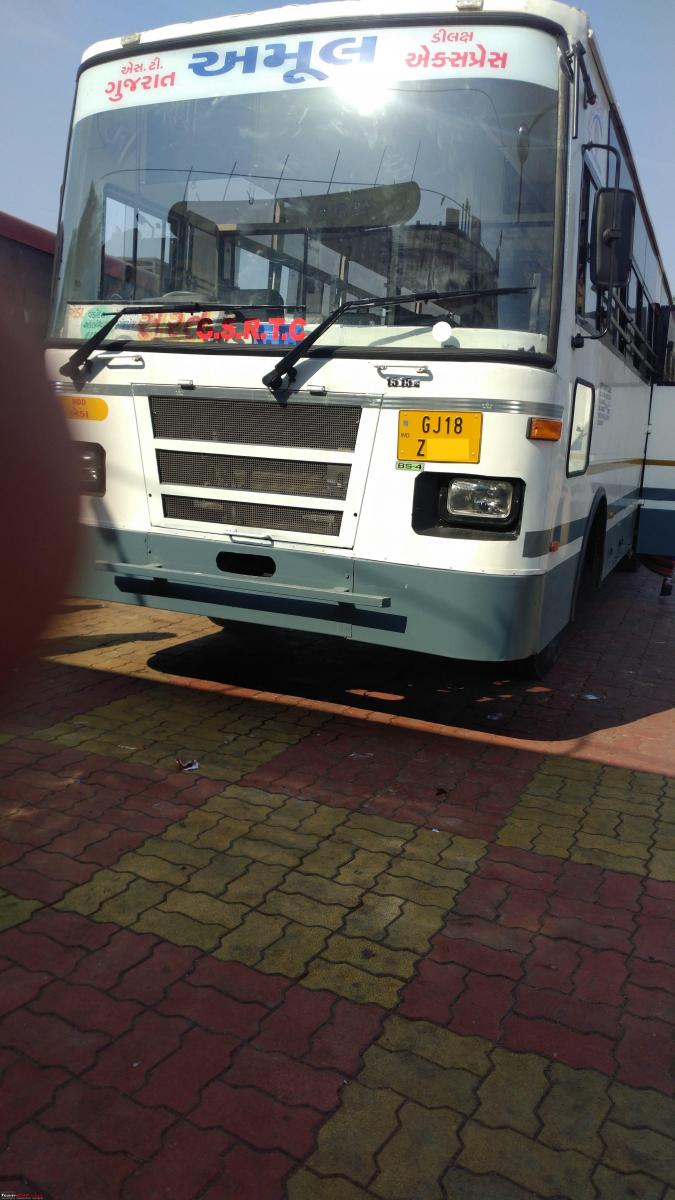
Inside a GSRTC Express - even a trash can was provided
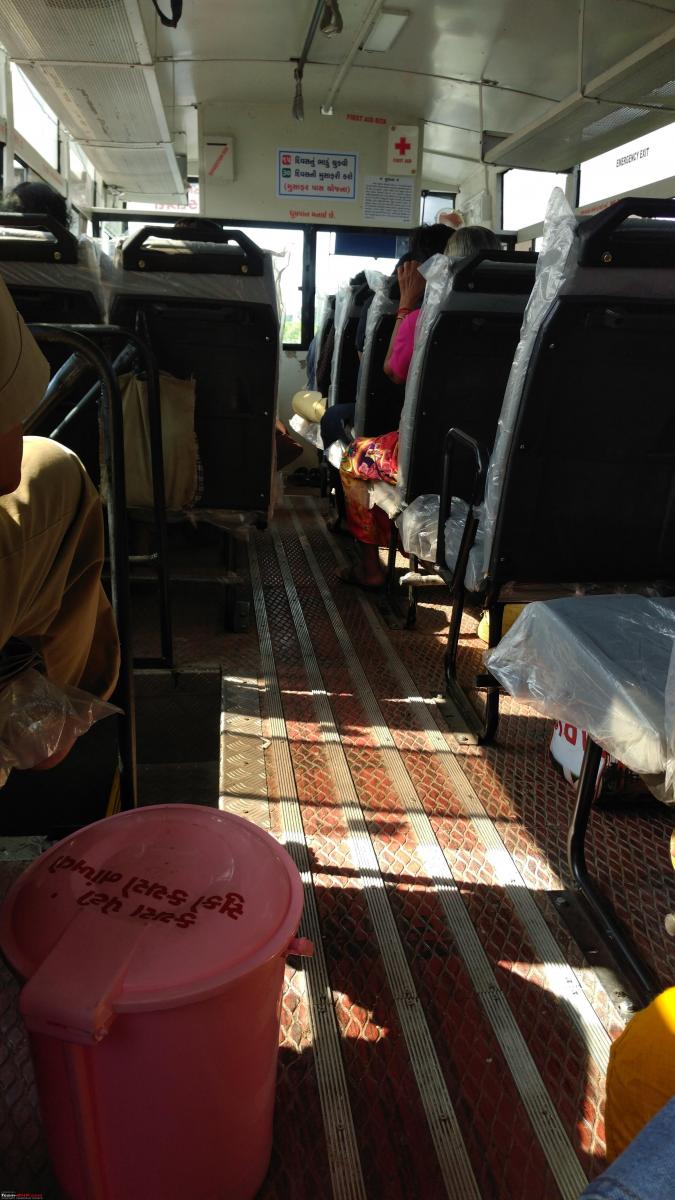
Pre-2017 Express - note the exterior shade
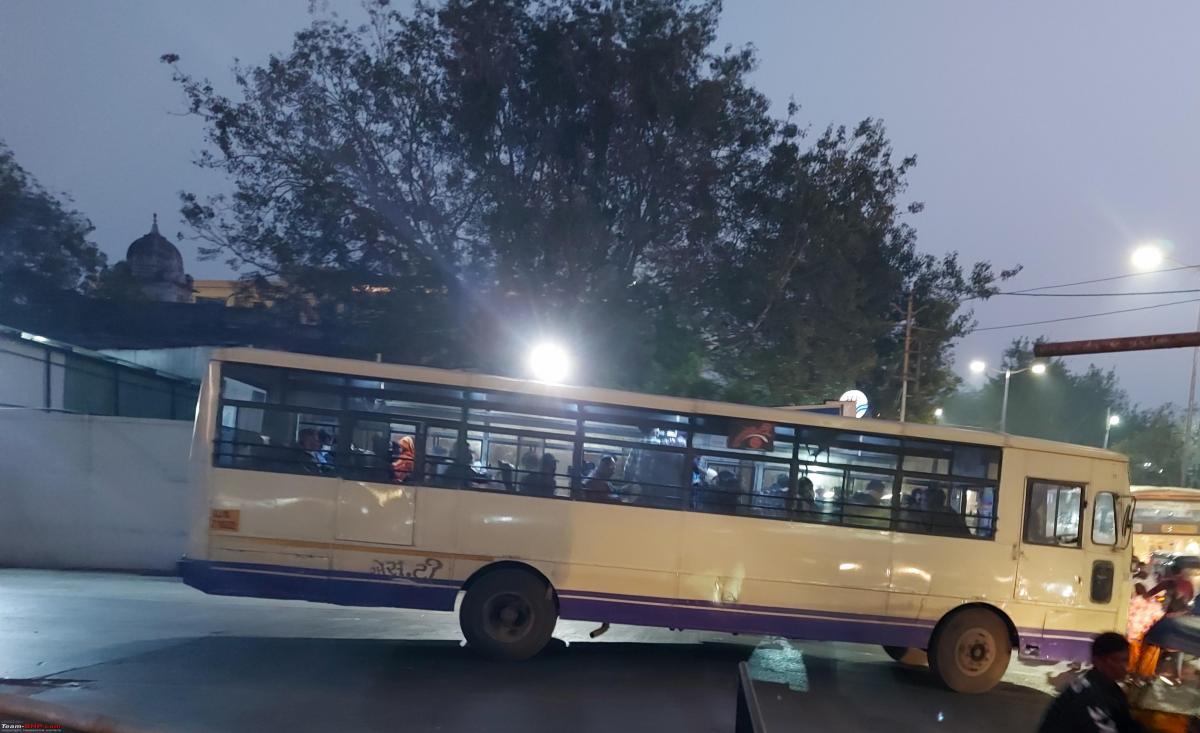
The latest BS6 Express - note the longish front
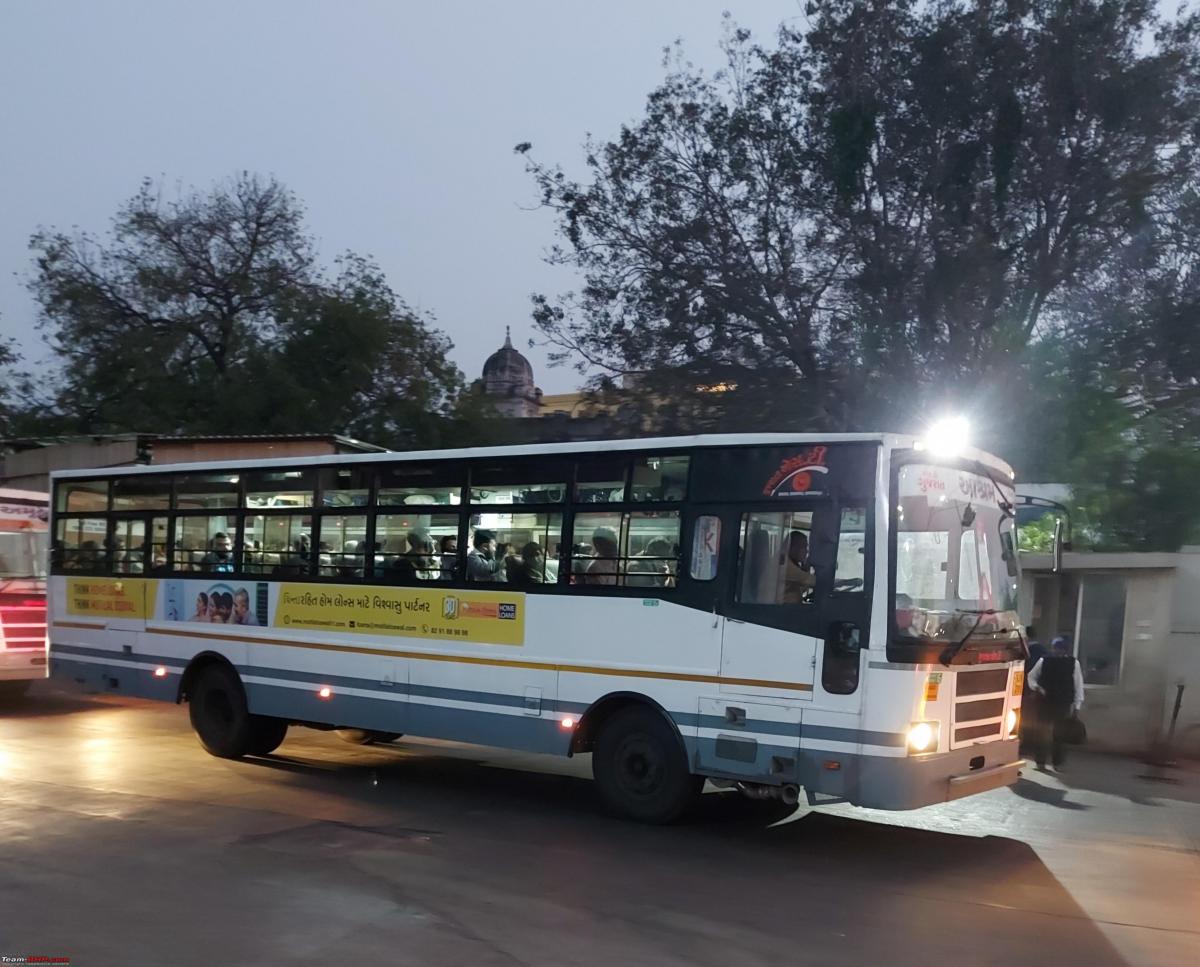
Gurjarnagari
- Light red shade.
- 46 seater, 3+2 seating.
- Entry/exit door in the front.
- Seats with better headrests and marginally more legroom than the Express.
- Glass sliding windows.
- Fare approx. 10% more than Express.
- Have used this bus only on the Vadodara-Ahmedabad sector.
- Best timing: 1 hour 40 mins from Vadodara CBS to Ahmedabad Gita Mandir CBS by an Aurangabad to Ahmedabad bus - non-stop via NE1.
- Worst timing: 2 hours 10 minutes from Ahmedabad Gita Mandir CBS to Vadodara CBS - in evening traffic using the BRTS lanes almost till CTM Crossroads.
- Best ride: 2 hours 15 minutes Ahmedabad Gita Mandir CBS to Vadodara CBS in a torrential downpour and low visibility - absolutely zero water leaks except for some minor seepage via the wheel wells onto the aisle.
I'm not too sure but don't see new Gurjarnagaris having been introduced in the BS6 avatar.
Gurjarnagari beautifully decked
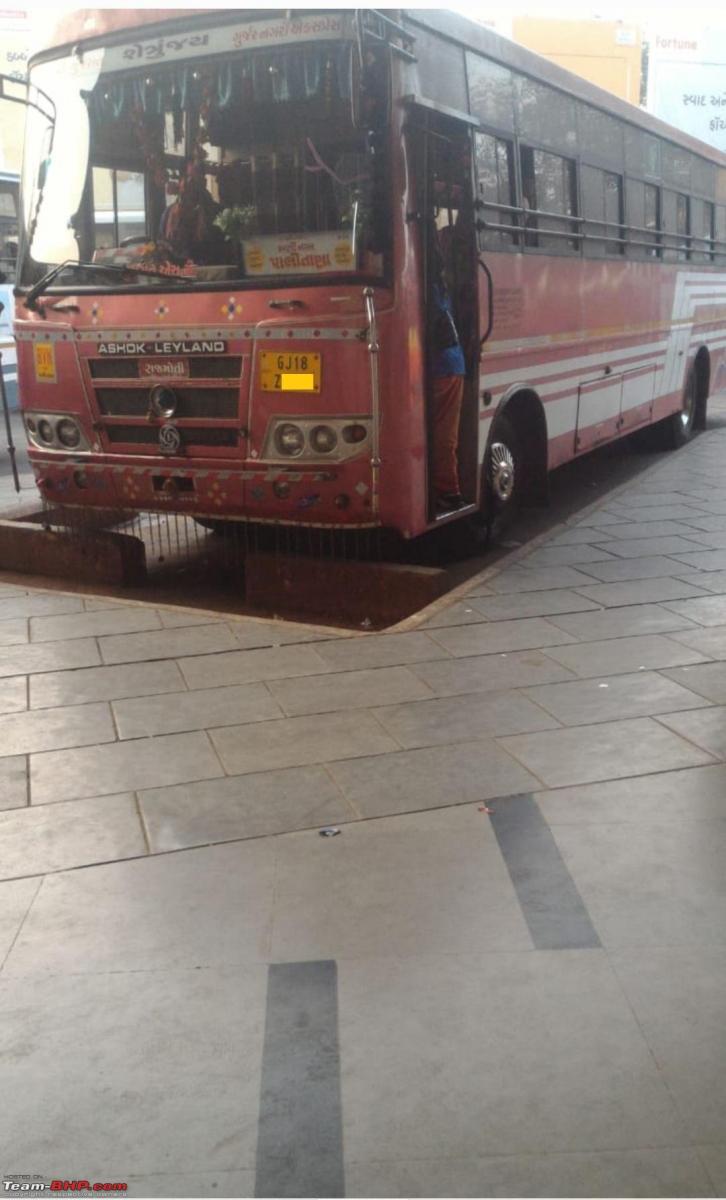
Gurjarnagari cabin
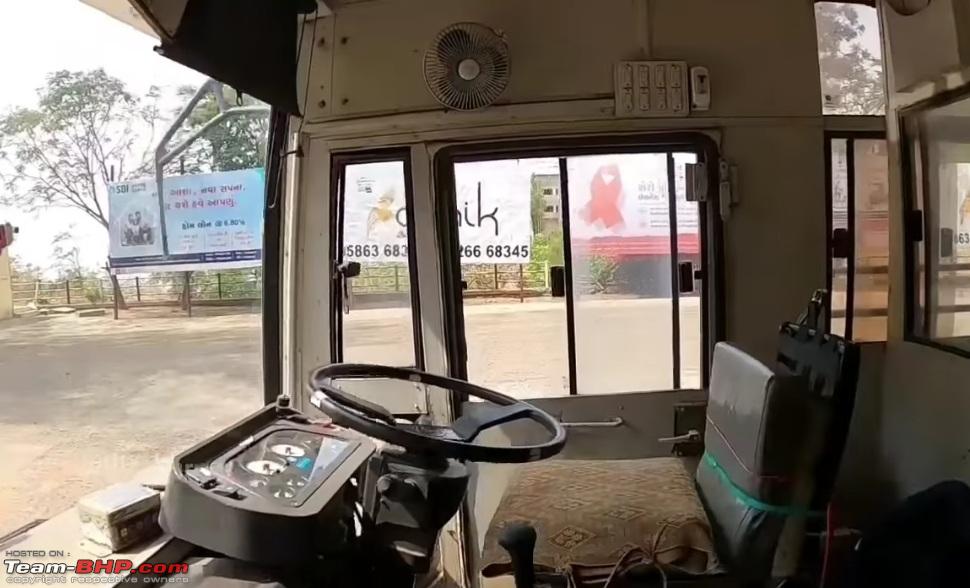

Gurjarnagari clicked in 2022 - still looks good
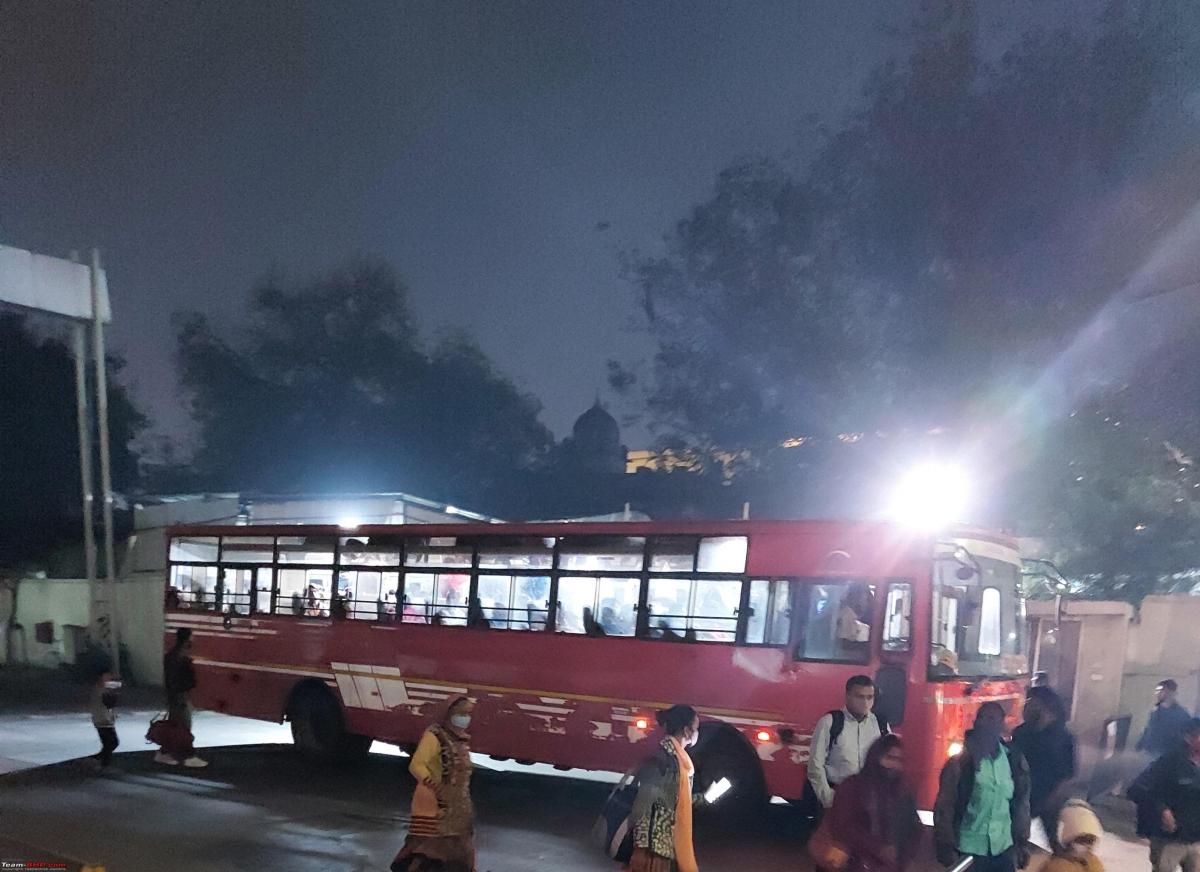
Continue reading vigsom's thread about GSRTC transformation for BHPian comments, insights and more information.
- Tags:
- Indian
- Member Content
- Bus
- Transport





